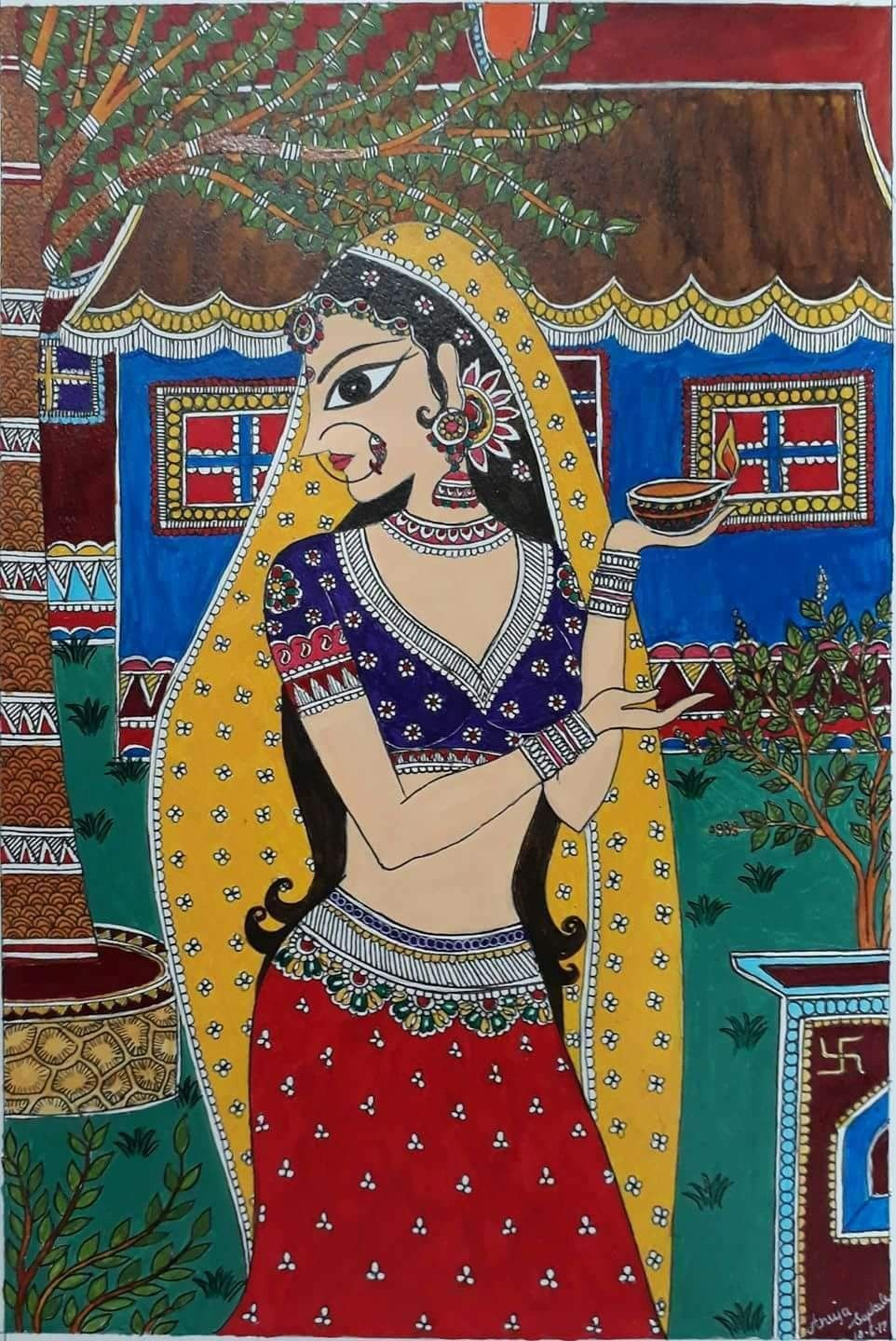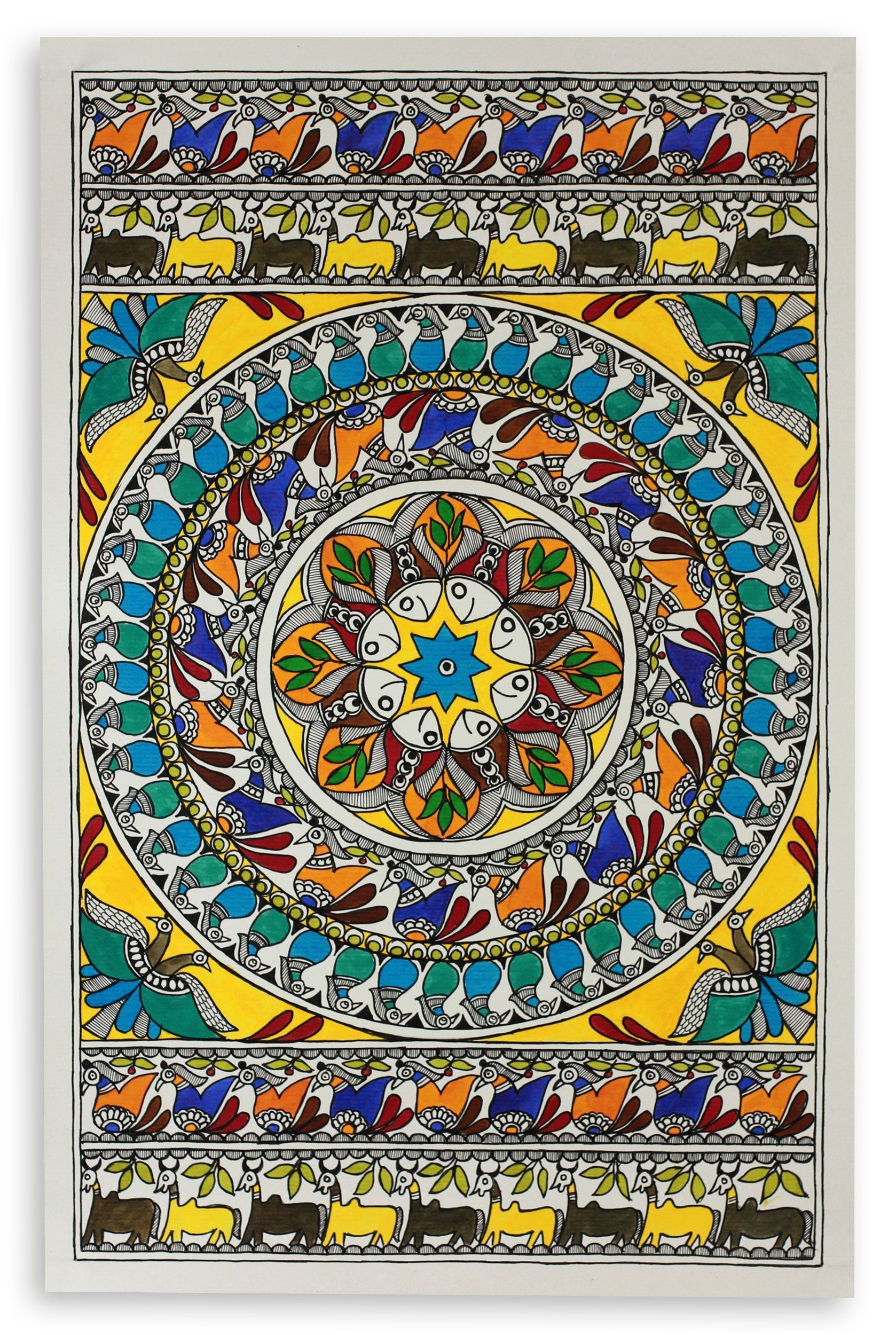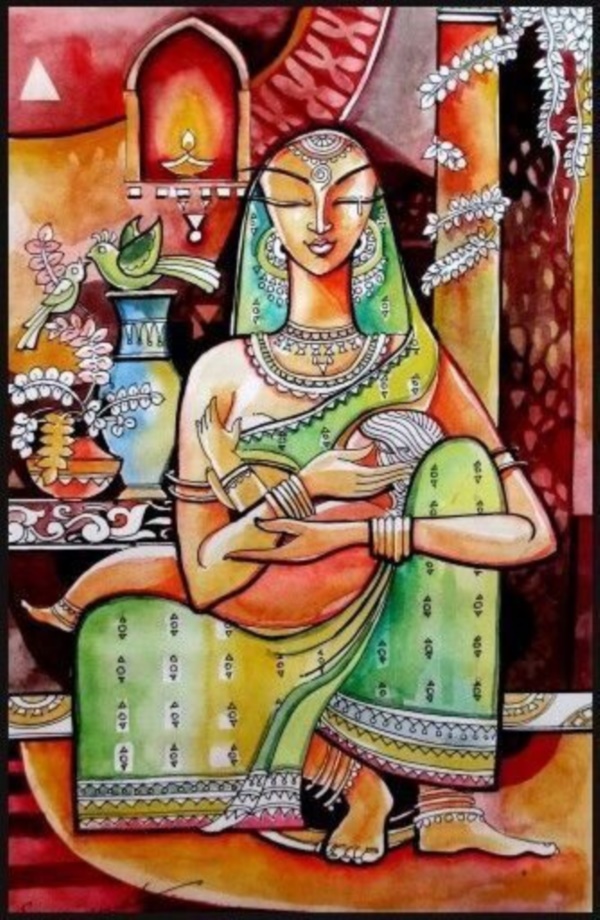
Photos A traditional Madhubani painting from Bihar Outlook Traveller
Madhubani art — also known as Mithila art — is a traditional Indian art form noted for its use of local plants for colors, cow dung to treat the paper and bamboo sticks that serve as brushes, not to mention the beauty and simplicity of the paintings themselves. A Madhubani artist begins filling in her elaborate outline, a hallmark of this.

MADHUBANI PAINTING EASY CREATIVE ART Madhubani art, Madhubani
In the past, Madhubani painting was done on wall walls by applying cow dung and mud. However, after 1966-68 it was easy to create this painting on handmade paper. To make handmade paper, mix cow dung, Multani Mitti and Neem juice. This gives the paper a light yellowish look that resembles a mud wall.

Madhubani Art Wallpapers Wallpaper Cave
Mithila painting featuring God Shiva-Parvati and the Mahavidyas. Madhubani art (also Mithila art) is a style of painting practiced in the Mithila region of India and Nepal. It is named after the Madhubani district of Bihar, India, which is where it originated.Artists create these paintings using a variety of mediums, including their own fingers, or twigs, brushes, nib-pens, and matchsticks.

Madhubani Painting CIMA Gallery
Basic Characteristics of Madhubani Paintings. Madhubani art has different styles, namely Bharni, Katchni, Tantrik, Godna, Kohbar. The themes of drawings and paintings, are mainly based on the Gods and Goddesses, the Sun, the Moon, the Stars, religious symbols like the Om, the good luck symbols, auspicious signs and others.

Types of Madhubani Painting Authindia
Madhubani Art is a style of painting, practiced in the Mithila region of India and Nepal. It was named after Madhubani District of Bihar, which is where it originated. It is done with many tools like fingers, twigs, brushes, nib-pens, and matchsticks and using natural dyes and colours. What separates Madhubani art from other forms of art are.

Madhubani Art Wallpapers Wallpaper Cave
One of the most popular traditional art forms is Madhubani painting, which claims roots in Indian mythology and takes its name from its geographic origin in northern Bihar. Madhubani art — also known as Mithila art — is particularly special, with its unique use of local plants for colors, cow dung to treat the paper and bamboo sticks that.

Madhubani A Celebration of Mithila Art
Madhubani Painting of Bihar: Madhubani art (2019) by Satya Narayan Lal Karn Dastkari Haat Samiti. The late Satya Narain Lal Karn, national award-winning artist depicted the 4th Sustainable Goal of the United Nations on reducing child mortality. It displays the natural instinct of animals to protect their young.

The Golden Traditional Madhubani Painting at Art Gaga
About Us. Sudip Srivastava and Smriti Srivastava ambition was to promote Indian Art and Culture worldwide. To fulfill their dream, they started Facebook group in the name of Madhubani Paintings and Art on May 2016. Gradually this group recognize by each and every corner of Globe and reached a members strength of 2.20 Lacs (As on July-23).
Madhubani Paintings . . . . . . . (S.N. ARTS) Buy Madhubani / Mithila
Shop at AbeBooks® Marketplace. Search from 200+ million listings. Secure transaction. Price comparison. Worldwide inventory.

MADHUBANI PAINTING OF PEACOCK AND FISH
Government of India recognized the contribution of Madhubani painters by honouring the pioneering Madhubani artist, Jagdamba Devi, in 1970. In 2008, another artist, Mahasundari Devi, was awarded Padmashri. Both public and private art promoting agencies today consider Madhubani painting as one of the definitive cultural contributions of India to.

Easy Folk Art Madhubani Painting Download Free Mockup
Image - Wikimedia. One of the traditional forms of paintings that was practiced in households and painted on walls by the women of the home, Madhubani Paintings also called Mithila art have come a long way in getting wide spread acclaim and attention. Considering that this Indian folk art form has been passed through generations and managed to save an entire forest speaks volumes about how.

Original Madhubani Painting madhubani Bride 100 Etsy
Preparing the canvas. The base of the painting is given a coat of cow dung to preserve the painting from insects. Artists use cow dung wash on paper to create a background closer to that of wall paintings. It also acts as an insect repellent. Madhubani Painting of Bihar: Process (2019) Dastkari Haat Samiti.

Madhubani paintings Madhubani art, Madhubani painting, Indian folk art
Today, modern madhubani paintings can also be found on sarees, stoles, bags, clocks, etc. The art of Mithila is unique, for here we can see a unique blend of comprehension, knowledge of Sanskrit and culture, vocabulary and iconography. Ganga Devi, a significant artist in Madhubani art Ganga Devi is a Kayastha painter from the village Rasidpur.

35 Easy Madhubani Art and Paintings for Beginners
Madhubani painting is a renowned folk-art form that originates from the Mithila region, which includes the northern part of Bihar and the eastern Terai of Nepal. The beauty of Madhubani paintings lies in their simplicity and use of natural materials. Local plants are used for colors, cow dung treats the paper, and bamboo sticks serve as brushes.

Madhubani Paintings Peacock, Kalamkari Painting, Madhubani Art, Indian
Madhubani paintings are a type of folk-art form. The painting of Madhubani is represented by line drawings filled with bright colours and contrasts or patterns. Using natural dyes and pigments, this drawing is done with a number of materials, including fingertips, twigs, brushes, nib-pens, and matchsticks. It is classified by its eye-catching.

Madhubani paintingThe Vivasvana The sun Madhubani painting
The original inspiration for Madhubani art emerged out of women's craving for religiousness and intense desire to be one with God. Their subjects had linkages with relationships with environment, life, religion & society, morality. Mithila is most celebrated, however, by the Ramayana, the most popular Indian epic.